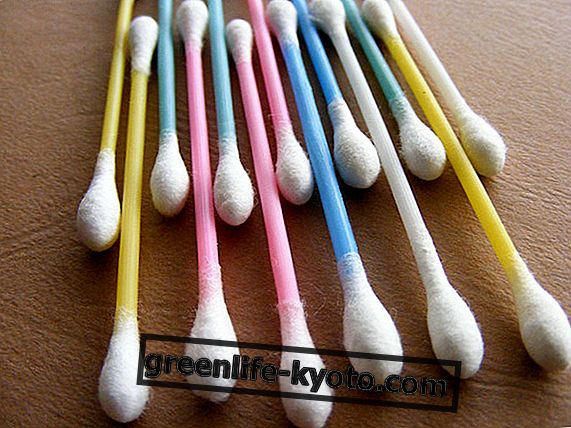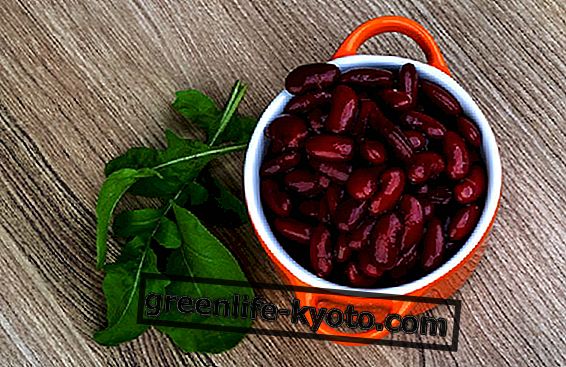In the ears of those who do not chew a little bit of botany, the expression "false fruit" can be negative, since commonly the term "false" has a connotation linked to deception and error.
We do not find any of these elements in the false fruits: they are in fact fruits, in which however not only the ovary, or the part that guards the ova, grows and is enriched with nourishing material, but also other parts, generally the receptacle .
Many of the most classic fruits, starting from the same apple, are not actually real fruits but, indeed, false fruits, or, with a somewhat happier expression, compound fruits .
Apple
Apple, the false fruit par excellence, one of the most sold and consumed in the world, rooted in the collective subconscious because of its symbolic, fairy-tale and religious connotations.
The reality, botanically speaking, only the core of the apple corresponds to the true fruit, while all the remaining pulp corresponds to the receptacle .
In the apple we find antioxidant phytonutrients, good doses of dietary fiber and flavonoids . It is true that an apple a day keeps the doctor away.
Pear
Like the apple, the pear is a pomacea from the Rosaceae family, and like in the apple, the true fruit corresponds to the core, the seat of the seeds, or of the ovary, while the sugary pulp is nothing but the receptacle.
Pears abound in sugars and fiber but do not excel in either vitamins or mineral salts.
Nashi
Still in the genus Pyrus we find nashi, also a false fruit, as in the aforementioned cases.
Relative of the pear, like this rich in dietary fiber, but poorer in sugar and richer in vitamin C. The range of mineral salts is less extensive.
Quince
In the Rosaceae we also find the genus Cydonia, whose only representative is the famous contogna apple, rich in pectin and vitamin C and very useful for jams.
It shares the same structure as the false fruit of the other pome fruits: the fruit resides in the core while the pulp is only the rich inflorescence.
Quince jam, benefits and recipe
Strawberry
The strawberry is part of the false fruit and is the classic case of aggregate fruit : the achaeans, the yellow dots, are the fruits of the plant, while the rest is the aggregate fruit.
An excellent source of vitamin C and manganese, the strawberry also contains many interesting phytonutrients : anthocyanins, flavonoids, flavanols, flavonols, and acids with an antioxidant power. .
Pineapple
Like the strawberry, the pineapple is a coalescence of fruits, in fact it speaks not only of a false fruit but of a compound fruit : its pulp does not derive from the receptacle but from the pistils (ginecei).
Pineapple is a perennial herb of Bromeliaceaerectually, and the fruit is rich in vitamin C and manganese.
Pomegranate
The case of the pomegranate makes history in itself. The type of fruit, the pomegranate, is unique in its kind, called balausta, a particular type of berry covered with a resistant exocarp that protects the seeds covered by the arils, or the external and edible part of the seed, the famous red grains.
FIG
In the fig tree what they call fruit is actually the inflorescence, a fleshy structure called sicono, typical of the Moraceae; the fruit consists of every single filament contained inside, small filiform drupes .
It is rich in nutrients , trace elements, dietary fiber, vitamins A, B1 and B2.
Melon
Even the melons or peponids are false fruits: in botanical language it would be a berry derived from the fleshy development of the ovary contained in the carpel, a characteristic modification of the leaves for reproductive purposes, in which this, by folding and welding, creates an environment suitable as an ovary .
The melon is mainly composed of water (about 90%) containing mainly potassium, phosphorus, calcium, vitamin C and vitamin B3, and also niacin, an antioxidant substance.
Watermelon
What is said for the melon also applies to watermelon, another peponide of the Cucurbitaceae belonging to the genus Citrullus and originating from the deep south of Africa. Its most important nutrient is an antioxidant, lycopene, useful in the prevention of tumors and in the fight against free radicals.
It also contains a portion of dietary fiber, proteins, sodium, potassium, iron, calcium, glucides and vitamins of groups A, B1, B2 and C.
Other false fruits
Of note are the common medlar, the Japanese medlar, the hawthorn, the azure, the rowan, the raven pear, the blackberry, the mulberry blackberry (black and white), the raspberry.













